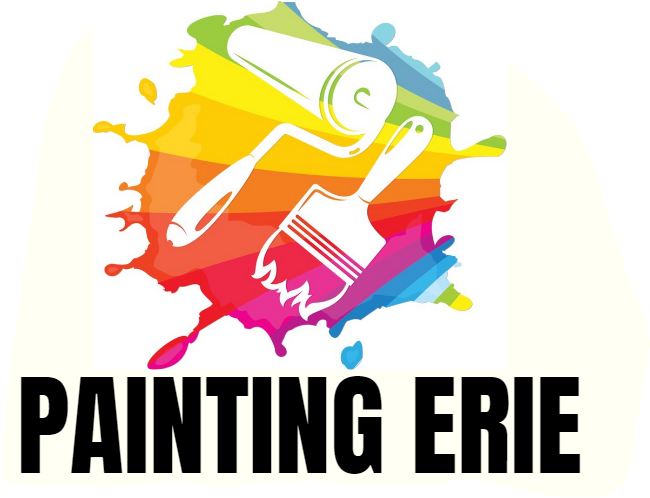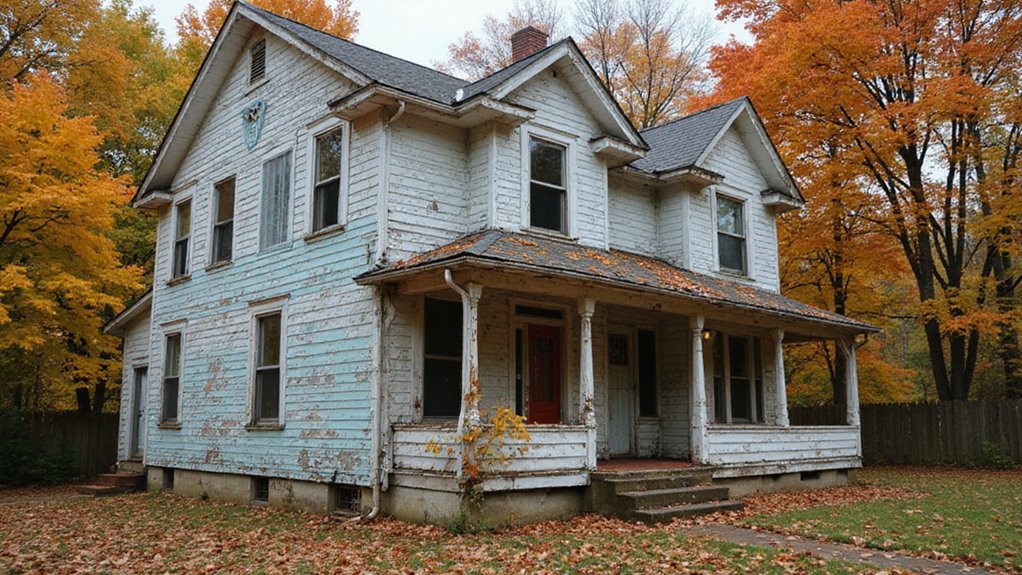As you plan your 2025 paint job, it’s vital to contemplate the Erie area’s unpredictable weather conditions. You’ll want to schedule your project during a sweet spot of temperatures between 50°F and 90°F, with low humidity and minimal precipitation. But that’s not all – you’ll also need to avoid high winds and excessive sun exposure, which can compromise paint adhesion and drying. With so many factors at play, timing is everything. What else should you keep in mind to guarantee a smooth, long-lasting finish?
Weather Conditions to Consider
How much notice do you give to the weather before scheduling a paint job? As an Erie area homeowner, you know that local weather conditions can significantly impact the outcome of your exterior painting project.
Wind patterns, for instance, can affect paint adhesion and drying time. Strong gusts can dislodge paint particles, leading to uneven finishes and wasted materials. Air quality concerns are also essential, as high humidity and pollutants can slow down the drying process and compromise paint durability.
Before scheduling your paint job, take a closer look at the local weather forecast and consider factors like wind direction, speed, and air quality indices. By doing so, you’ll be able to plan your project during a window of ideal weather conditions, ensuring a high-quality finish that will last for years to come. Additionally, choosing the right time for painting can provide protection from elements by ensuring the paint adheres properly and forms a strong barrier against environmental damage.
Temperature Ranges for Optimal Painting
While you’re reviewing the local weather report, don’t forget to contemplate temperature ranges, as they play an indispensable role in attaining a perfect paint finish. Temperature affects how paint dries, adheres to the surface, and ultimately, its durability.
Ideal temperatures for painting range from 50°F to 90°F (10°C to 32°C), allowing for a smooth, even application and proper curing.
If you’re painting in direct sunlight, consider the sun exposure levels, as high temperatures can cause paint to dry too quickly, leading to unevenness and imperfections.
Additionally, when planning exterior painting, account for the sun’s impact on color choices and paint durability over time.
Moisture and Humidity Factors
Most homeowners overlook the critical role moisture and humidity play in achieving a flawless paint job, but it’s essential to contemplate these factors to guarantee a durable and long-lasting finish. You need to consider the airflow considerations around your home, as poor ventilation can lead to trapped moisture, which in turn affects paint adhesion and durability.
Additionally, surface condensation effects can cause water droplets to form on your home’s exterior, creating an ideal environment for mildew and mold growth. To avoid these issues, make certain good airflow around your home by installing vents or whole-house fans, and address any condensation issues by improving insulation and reducing humidity levels. By controlling moisture and humidity, you’ll set yourself up for a successful paint job that will withstand Erie’s changing climate.
Scheduling Around Precipitation
When can you realistically expect to schedule your 2025 paint job in Erie, given the region’s unpredictable precipitation patterns? To guarantee a successful painting project, it’s vital to contemplate the seasonal timing and contractor availability.
Rainy spring mornings that turn into sunny afternoons
Warm summer days with occasional thunderstorms
Crisp autumn air with scattered showers
You’ll want to avoid scheduling your paint job during periods of heavy rainfall or high humidity, as this can lead to poor paint adhesion and uneven finishes. Instead, seek to schedule your project during the drier seasons, such as late summer or early fall, when the weather is more stable. This will also increase contractor availability, as it’s typically a less busy time for painting contractors in Erie. By planning ahead and choosing the right time for your paint job, you’ll be able to enjoy a beautiful, long-lasting finish that improves your home’s curb appeal.
The Impact of Sunlight on Paint Adhesion
The sun’s intense ultraviolet rays can greatly impact paint adhesion on your Erie home’s exterior. As you prepare for your 2025 paint job, it’s imperative to consider how sunlight affects your home’s exterior. UV rays can break down the paint film thickness, causing it to degrade and lose its bond with the surface. This can lead to peeling, flaking, and blistering.
Additionally, the sun’s rays can also exacerbate surface contamination, such as dirt, grime, and mildew, which can further compromise paint adhesion. To guarantee a successful paint job, it’s indispensable to assess your home’s sun exposure and take necessary precautions. By doing so, you’ll be able to enjoy a beautiful, long-lasting finish that withstands the harsh Erie climate.
Prep Work and Repairs Before Painting
You’ve got a solid foundation to build on with your knowledge of sunlight’s impact on paint adhesion, but now it’s essential to shift your focus to prep work and repairs before painting. This crucial step ensures a smooth, long-lasting finish. Start by conducting a structural integrity assessment to identify any weaknesses or damage that need attention.
Before you begin painting, make sure to:
- Scrape off old, flaking paint and sand rough surfaces to create a smooth canvas
- Fill gaps and cracks with caulk or spackling compound to prevent water intrusion
- Power wash your exterior walls to remove dirt, grime, and mildew, allowing for better paint adhesion
Planning Ahead for Seasonal Delays
Seasonal fluctuations can significantly impact your painting schedule, so it’s vital to plan ahead. As an Erie area homeowner, you’re likely aware that spring and summer are peak seasons for exterior painting projects. This increased demand can lead to reduced contractor availability, causing delays in your project timeline.
To avoid this, consider scheduling your paint job during the off-season (fall or winter) when contractors have more availability. Additionally, factor in the lead time for materials, which can take several weeks or even months to arrive. By planning ahead, you’ll guarantee a smoother, more efficient painting process. Don’t let seasonal delays hold you back – get ahead of the game and schedule your 2025 paint job today!
Frequently Asked Questions
Can I Paint Over Existing Paint Without Prep Work?
You can paint over existing paint, but it’s essential you do minimal surface prep to ascertain a strong bond; otherwise, paint adhesion concerns arise, leading to peeling or flaking, which’ll cost you more in the long run.
Will Painting Increase My Home’s Resale Value?
You’ll be happy to know that painting your home can vastly improve its resale value by enhancing its exterior appearance and increasing curb appeal, making it more attractive to potential buyers and setting it apart from the competition.
Do I Need to Remove Outdoor Furniture Before Painting?
Before painting, you’ll want to remove or cover outdoor furniture to protect surfaces from paint spills and splatters. If you can’t remove it, use drop cloths or plastic sheets to cover it, ensuring a smooth, mess-free painting process.
Can I Paint My House During the Winter Months?
You can technically paint your house during winter, but it’s not ideal; exterior paint application requires specific weather considerations, like temperatures between 35°F and 90°F, and low humidity, which winter often doesn’t provide.
What Type of Paint Is Best for High-Traffic Areas?
When choosing paint for high-traffic areas, you’ll want to prioritize durability and sheen. Look for paints with high-scrub resistance and a semi-gloss or high-gloss sheen to guarantee a long-lasting, easy-to-clean finish that can withstand heavy wear and tear.

